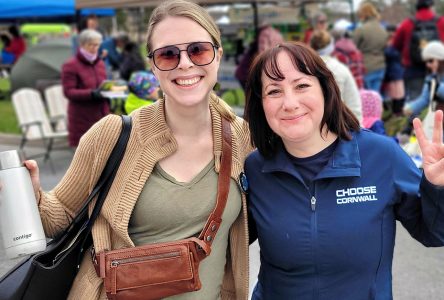Family physicians, nurse practitioners and primary care leaders from across the province have innovative ideas that will improve the current healthcare system. In Cornwall and rural eastern Ontario, the Great River Ontario Health Team Primary Care leaders have a solution that would help connect 11,300 patients with a primary care provider and offer team-based services to people who have a doctor but no access to other supports.
Nearly 20,000 people in our area do not have a family doctor or nurse practitioner. Ontario Health data shows that residents of Cornwall, Russell Township and North and South Glengarry struggle the most to access care in the community. Additionally, Cornwall and some of the local rural areas are home to a population that has the highest level of material deprivation east of Toronto. This community is suffering because they are struggling to access care they need.
We have solutions, but we need government support to be able to make them happen.
The Great River Ontario Health Team (OHT)’s solution is to bring an additional 64 new healthcare workers to the existing four team-based models to provide people with access to desperately needed care from a team of family doctors, nurse practitioners, respiratory therapists, occupational therapists, social workers and other specialists.
Our program would mean that the Glengarry Nurse Practitioner Led Clinic, Seaway Valley Community Health Centre, Centre de santé communautaire de l’Estrie and the Rideau St. Lawrence Family Health Team would be working together to distribute these new providers in areas where the majority of patients currently have no primary care provider. We would offer full access to allied health services for any patient of any family physician or nurse practitioner, regardless of whether they are part of one of these groups or not.
Not only will this expanded team increase access to comprehensive primary care in the region, but it will link care and reduce barriers for historically disadvantaged populations who live in the area, including the elderly, children and youth, Indigenous peoples, and low-income individuals.
Unique to the area, is the large population of francophones. In some areas that the OHT serves, more than 20 per cent of people primarily speak French. By supporting services for both anglophones and francophones, more patients in the area will be able to receive care in their language of choice.
Another challenge in the area is the lack of walk-in clinics. In Cornwall, there is one clinic, which cannot solely handle the volume of people in the city, let alone the vast rural geography as well. Overall, the lack of care options puts additional pressure on the local emergency departments because for many it’s the only place to receive care, testing and prescriptions.
The expansion of a collaborative primary care program across the OHT would allow more people to have access to medical assessment, diagnosis, treatment and preventative services in the community and across their lifespan, including access to optimized cancer screening, chronic disease management and mental health supports. It would mean people would get the “Right Care in the Right Place, at the Right Time”, with the Right Provider, rather than going to the emergency room or being admitted to hospital, both of which are far more expensive for government and taxpayers. This is completely in alignment with Ontario Health and the Ministry of Health’s Transforming Health Care policy.
As for who would staff this expansion, all four team-based models have waiting lists for family physicians and nurse practitioners who have expressed interest in relocating to the area to join these teams, but currently the teams lack funding to hire them. This includes physicians who have expressed interest specifically in working with the local Indigenous population, one of the most underserved groups in the OHT. It is also believed that this expansion will help attract new family medicine graduates to the area because of the collaborative approach and the welcoming medical community culture. Recruitment to other practices will be crucial in the coming years to replace several family physicians who are on the brink of retirement.
We have a solution that would provide thousands of people in Cornwall and the region with primary care and provide allied health supports to the patients of family doctors who are currently excluded from access, simply by the way health services are organized. All we need is the funding to do so.
The Government of Ontario has an opportunity to help take us one step closer to connecting all members of the community with this vital care and demonstrate how existing team-based models can work together to create a “team-based care for all” environment, in support of all providers and the people we serve.



